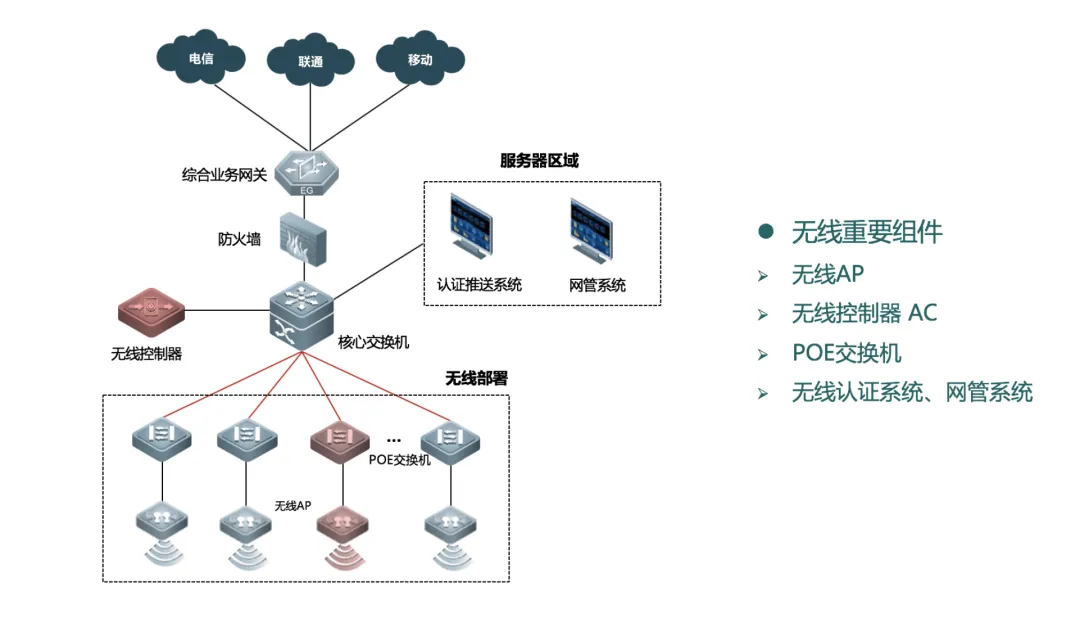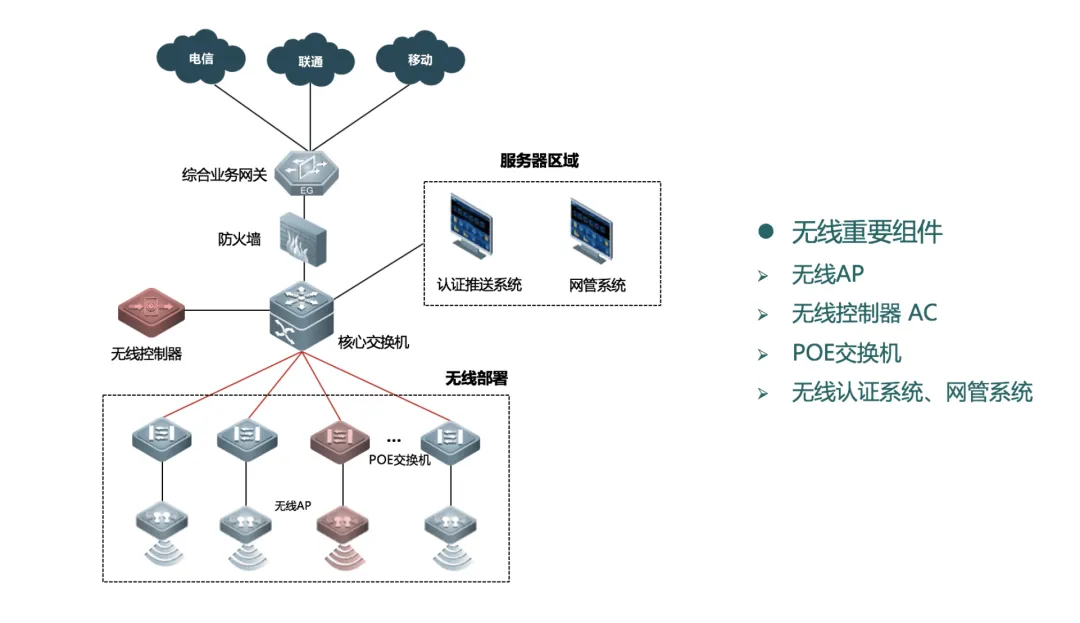01 Wireless Typical Networking One: Home Wireless Network
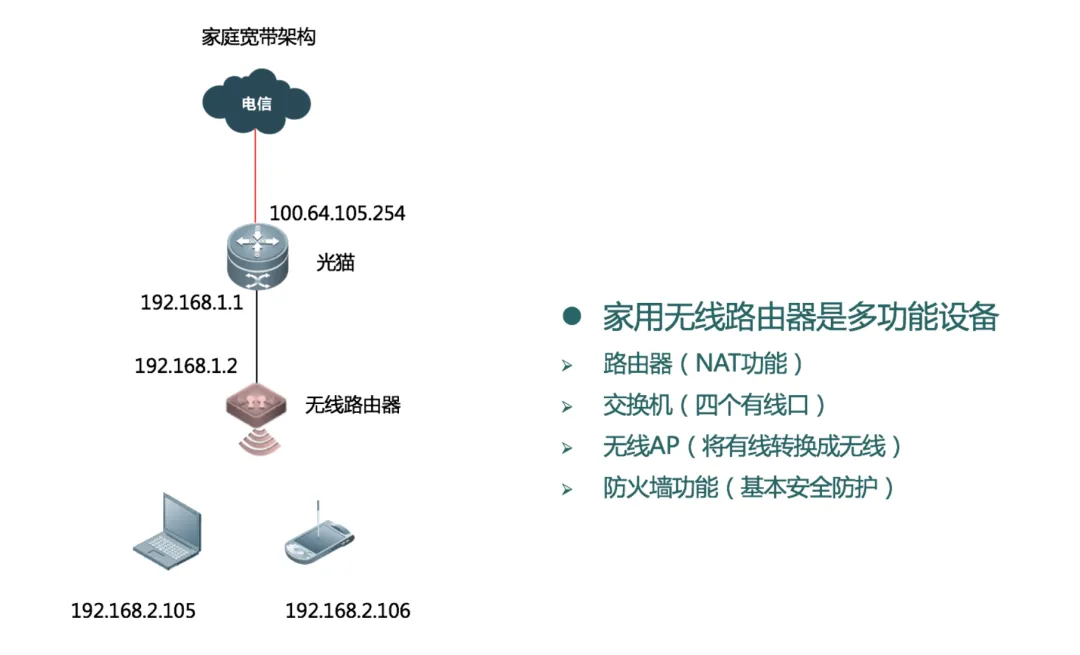
This is a typical home wireless network. In this network, NAT is performed twice, once at the wireless router and once at the optical modem exit. The wireless router converts wired signals into wireless Wi-Fi signals.
The wireless router can also be set to relay mode, with DHCP performed on the optical modem, allowing the wireless router to only perform Layer 2 transparent transmission without the need for NAT.
02 Wireless Typical Networking Two: Ad-Hoc Networking Architecture
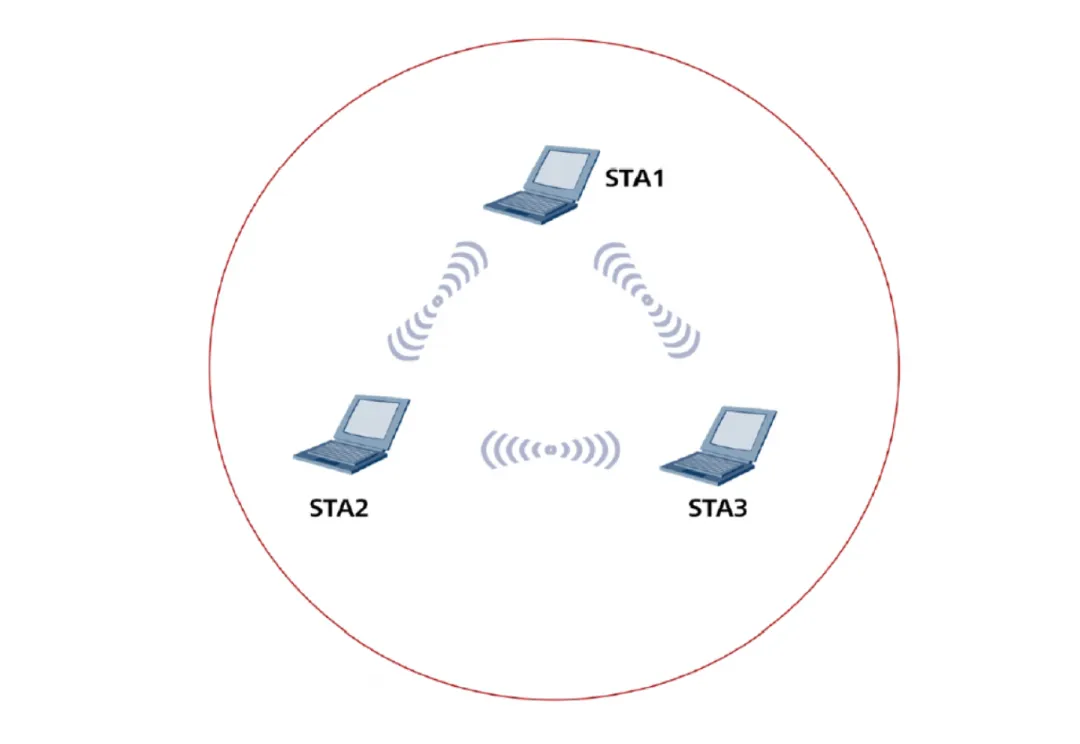 Users can create a wireless network on their laptops (Windows 7 and above) for other wireless terminals to connect, enabling local area network communication.
Users can create a wireless network on their laptops (Windows 7 and above) for other wireless terminals to connect, enabling local area network communication.
03 Wireless Typical Networking Three: Wireless Networking for Small and Medium Enterprises
04 Wireless Typical Networking Four: Large-Scale Wireless Networking Architecture
Previous articles have introduced the three major components of wireless: wireless AP, wireless controller, and POE switch.
05 Wireless Typical Networking Five: WDS Wireless Bridging Network
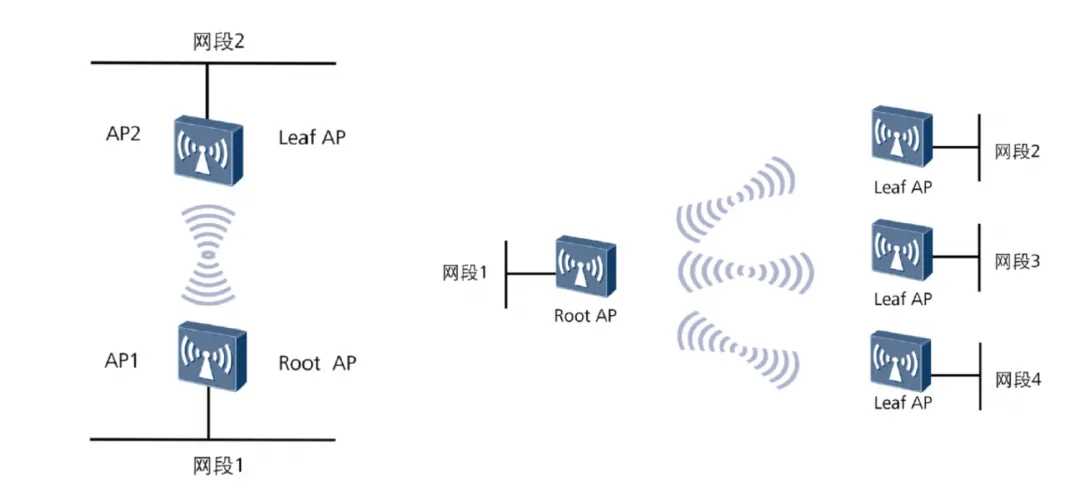
06 Wireless Typical Networking Six: MESH Networking
Wireless MESH networking (Wireless Mesh Network, WMN) refers to a mesh dynamic self-organizing and self-configuring wireless network that connects multiple APs via wireless links, ultimately connecting to a wired network through one or two root nodes. The network architecture is shown in the figure below:

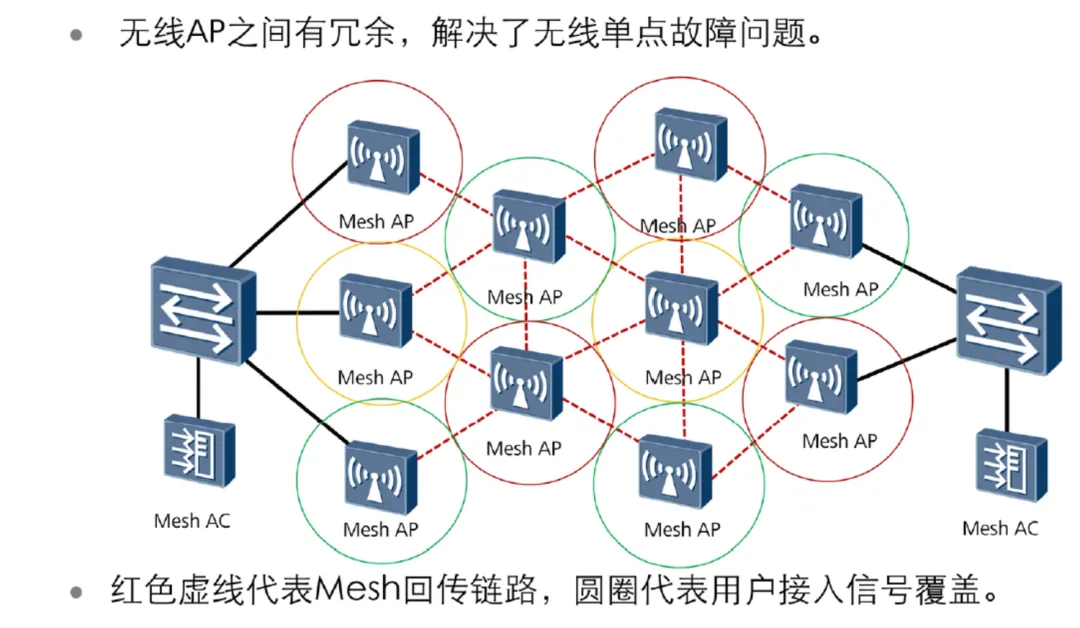
MESH architecture is mainly applied in warehouse environments or factories: such scenarios have a large area and are not suitable for wiring, so only MESH architecture can be used. APs are set to MESH mode, automatically negotiating for networking and data backhaul, with edge APs connecting to the wired network, reducing wiring work and providing link redundancy.
In summary, we have introduced several common wireless networking architectures. Bridging and MESH architectures are not used frequently, so everyone should only understand them. The other several networking types are more common and should be further understood.
Source: 5G Communication
Reviewed by: Zhao Lixin

